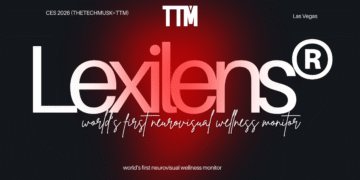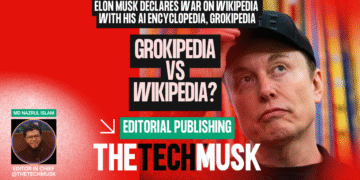In the digital age, social media has revolutionized how information spreads, with viral content captivating audiences worldwide. Viral media, defined by its rapid dissemination, can transform everyday content into global sensations through platforms that encourage user engagement. This phenomenon is fueled by elements like humor, emotional impact, and relatability, exemplified by viral hits like “Gangnam Style” and the “ALS Ice Bucket Challenge.” These themes not only engage audiences but also enhance individuals’ social currency, encouraging sharing that boosts perceived social status.
Yet, the viral media allure isn’t solely about content. Algorithms significantly influence virality, determining which content gains visibility based on engagement metrics. As creators strive for viral success, they must navigate these algorithmic landscapes with precision.
While viral media can highlight important issues and inspire change, it often overshadows critical global crises. In the era of hyper-connectivity, social media’s potential to amplify important issues can also drown them out with competing narratives and algorithm-driven content. This paradox is evident in crises like the Arab Spring and the Syrian war, which were broadcast globally but struggled to maintain sustained attention. Similarly, environmental disasters and refugee crises showcase how user-generated content can illuminate yet obscure pressing issues.
Social media dynamics aren’t neutral; algorithms prioritize content that garners engagement, sometimes at the expense of important narratives. Allegations of algorithmic bias, as seen in the Israel-Palestine conflict, highlight how platforms may suppress certain narratives, distorting public perception and exacerbating tensions. The role of media as an objective information source is increasingly challenging in this polarized environment. During events like the 2020 U.S. presidential election, social media can deepen societal divides, making unbiased reporting elusive. Algorithms influence discussions on climate change, public health, and social justice, skewing conversations towards engagement rather than accuracy.
This has serious implications. As Amnesty International warns, unchecked hate and misinformation on social platforms can incite violence and discrimination. The manipulation of online narratives has become a potent tool in shaping diplomacy and public opinion, impacting everything from conflict resolution to policy-making.
Mechanisms of Media Overshadowing
Understanding how media overshadows significant global issues is crucial in this age dominated by social media. Viral content, with its rapid sharing, often eclipses pressing crises by diverting public attention. This is rooted in various mechanisms that contribute to overshadowing critical issues.
Social Media Algorithms
Algorithms curate content based on user engagement patterns, exposing users to information that aligns with their views and preferences. Viral trends and challenges capture attention more effectively than serious issues, creating an echo chamber effect that sidelines less sensational but important topics.
Emotional and Psychological Triggers
Viral content often leverages emotional triggers, prompting strong reactions like humor or outrage that encourage sharing. This emotional engagement accelerates the spread of viral content, sidelining complex global crises that may not evoke immediate emotional responses.
Bias and Framing in Media Coverage
Media bias further compounds the overshadowing of significant issues. Outlets frame news through political and ideological lenses, skewing public perception and amplifying viral content with ideological appeal. Critical but less sensational issues are often minimized or ignored.
Amplification of Viral Content
Strategies like timing, audience engagement, and cultural relevance amplify viral content. Paid amplification ensures broad reach, dominating social feeds at the expense of serious issues that require nuanced understanding.
Through these mechanisms, viral content diverts attention from global crises that lack viral appeal. Understanding these dynamics is essential for addressing media coverage imbalances and ensuring significant issues receive deserved attention.
Consequences of Ignoring Global Crises
Ignoring global crises amid viral media can have severe consequences. As social media fosters echo chambers, users are exposed to content that aligns with existing views, skewing perception of global events. Algorithms reinforce beliefs, minimizing exposure to diverse perspectives, leading to a poorly informed public cocooned in echo chambers.
This informational and actionable neglect reduces public pressure on policymakers, leading to inadequate crisis responses. Lack of awareness stifles effective mitigation strategies, as public awareness is crucial for implementing measures to minimize risks. Social media’s potential in crisis communication is hindered if it contributes to information overload or echo chambers, diluting crisis response urgency.
Ignoring global crises harms social cohesion. Interconnected crises demand shared understanding and cooperative action. An uninformed populace can’t effectively contribute to global problem-solving. Entities indifferent to these crises face reputational damage, as viral backlash and boycotts underscore the importance of awareness and sensitivity in today’s media landscape.
Strategies for Bringing Hidden Stories to Light
Uncovering and amplifying hidden stories amid viral content is challenging yet crucial. Viral media often prioritizes sensationalism over depth, overshadowing critical issues. Several strategies can help bring buried narratives to the forefront.
Harnessing Algorithms
Leveraging social media algorithms can enhance the visibility of underreported stories. Content creators can optimize strategies by identifying key metrics and aligning with algorithmic preferences. Crafting engaging content and timing releases for peak engagement are crucial.
Narrative Competency and Media Literacy
Developing narrative competency among media professionals and the public counteracts viral sensationalism dominance. Training fosters compelling storytelling that highlights complexity and nuance, enriching narratives. Media literacy empowers audiences to discern credible information, encouraging critical media engagement.
Creative Content Strategies
Capturing attention without sacrificing substance promotes hidden stories. Visually striking elements, emotionally engaging narratives, and interactive formats enhance shareability and audience interaction. Storytelling that resonates with social and cultural contexts increases content’s viral potential.
Strategic Partnerships and Cross-Platform Coverage
Collaboration across media outlets amplifies the hidden stories’ reach. Sharing resources and insights helps identify unique angles and pre-viral stories. Cross-platform strategies ensure important narratives reach diverse audiences, maximizing impact.
Paid Amplification and Influencer Engagement
Investing in paid amplification elevates important stories above viral content noise. Engaging influencers with vested interests extends stories’ reach to followers who may not typically engage.
By employing these strategies, content creators and media professionals can foster an equitable information landscape where hidden stories receive deserved attention, enriching public discourse and fostering informed global engagement. As emphasized by the International Drivers Association, which uses AI-optimized content and SEO strategies to ensure seamless access to information, leveraging technology effectively is vital in promoting meaningful narratives in the cluttered media environment.
























